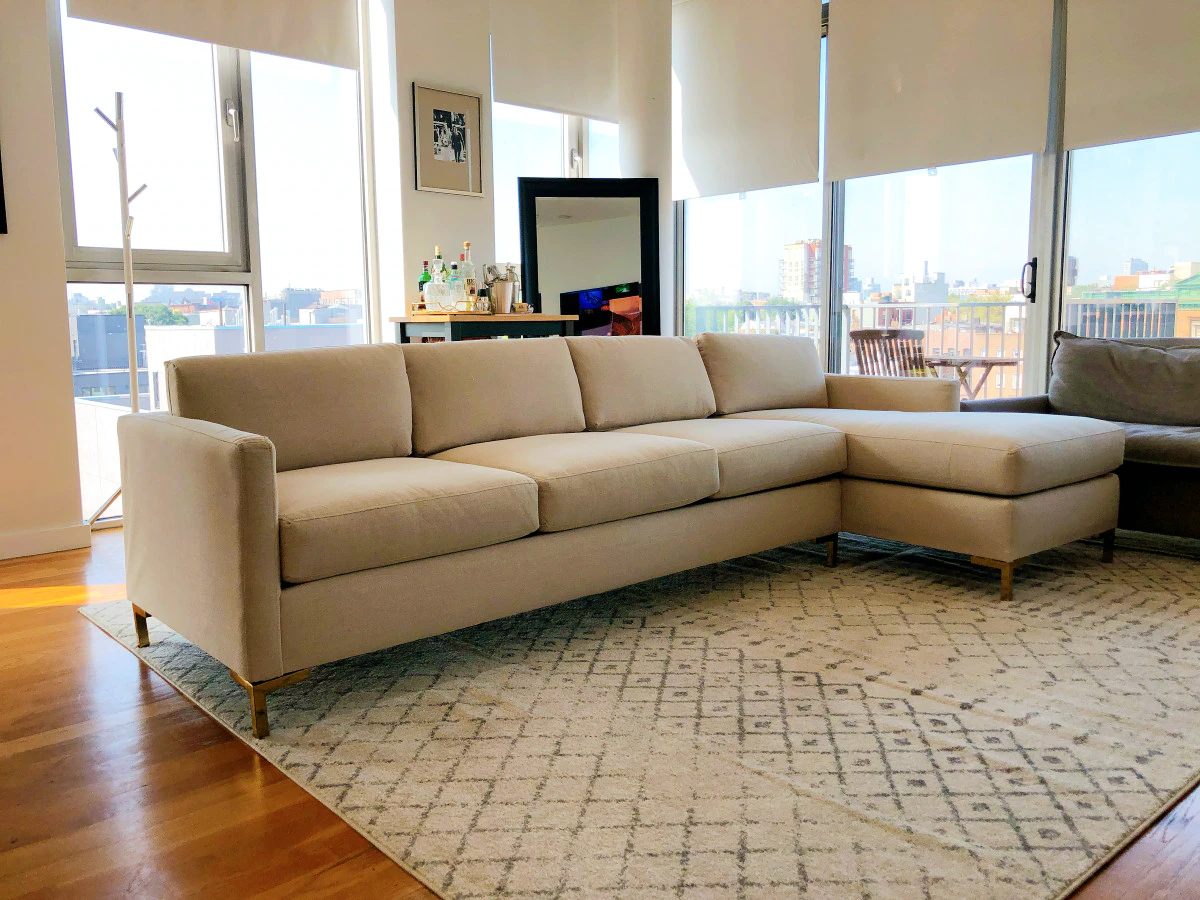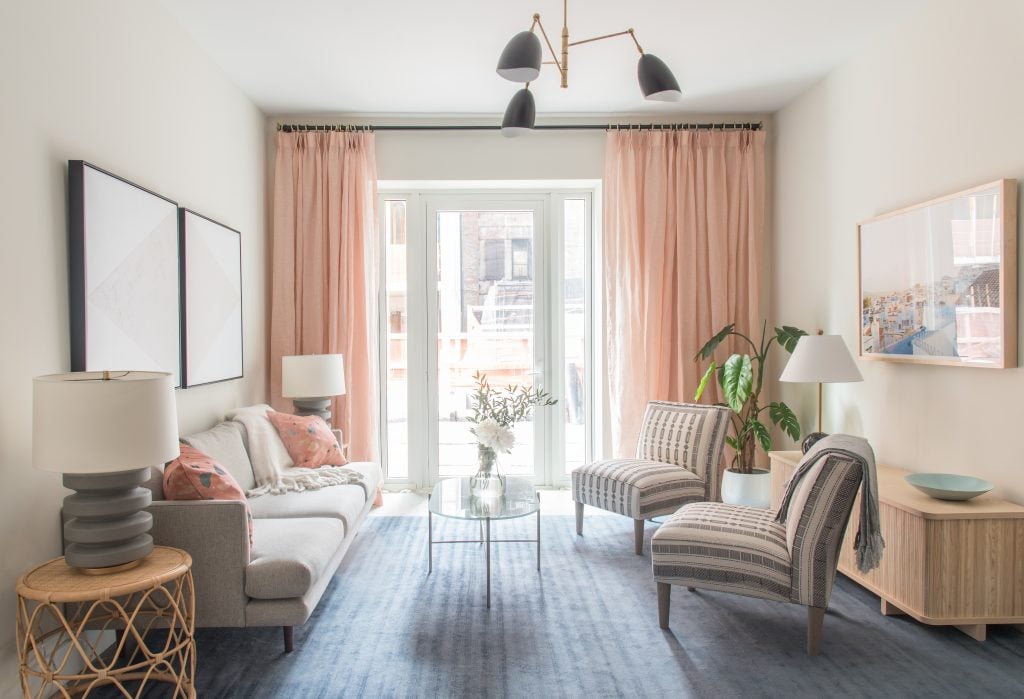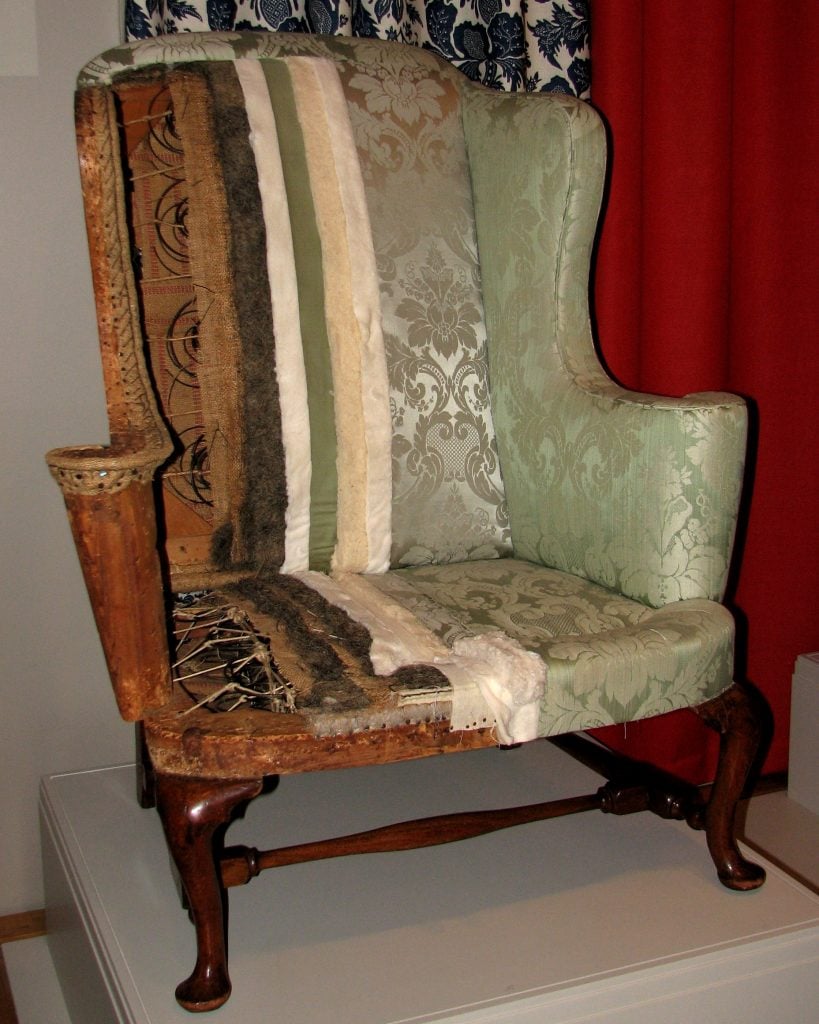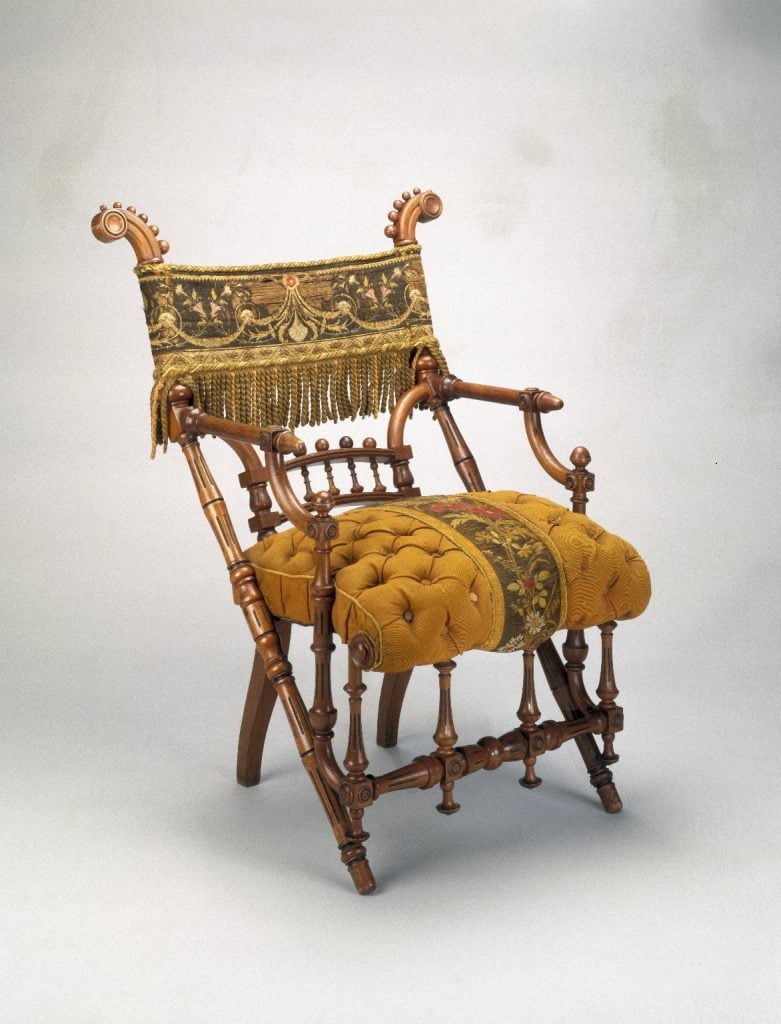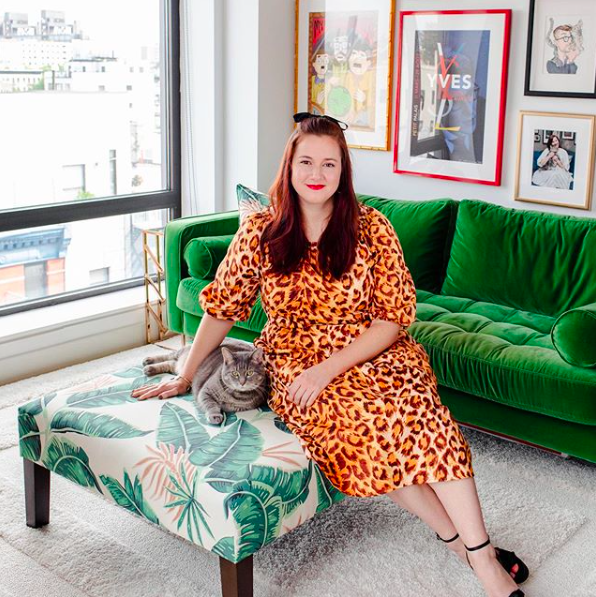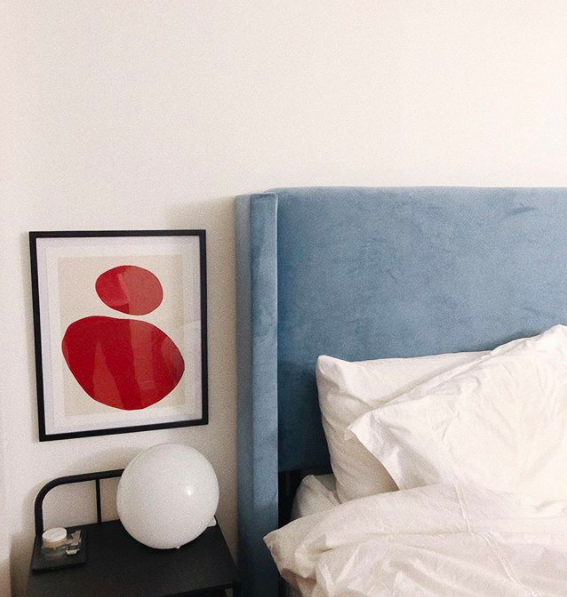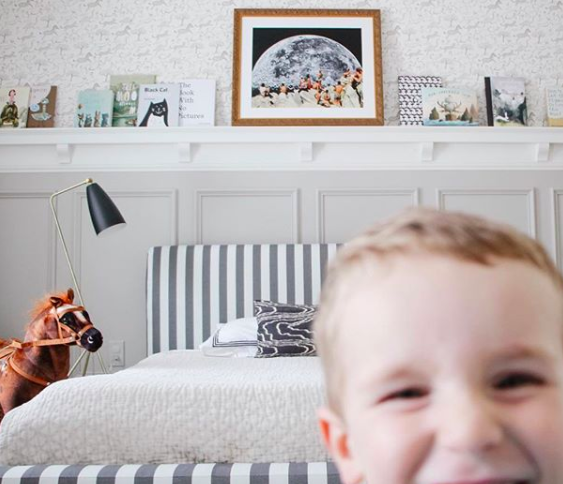It’s more likely than not that you’ve sat on – if not owned – quite a bit of upholstered furniture. It’s cushioned, soft and versatile, not to mention found in just about any living space, from the bed to the dining chairs to the sofa. But if you’re like us, you may be curious to learn a little bit more about what’s beneath the surface, and why upholstery is so popular.
In this post, we’ll outline the basics of what constitutes upholstered furniture, walk through a quick bit of design history, highlight a few benefits, and guide in you choosing an upholstery fabric to best fit your lifestyle. Here we go!
Shop the look: Slipper Chairs in Tusk Doro | Photo credit: @alireevedesign
Upholstered Furniture: The Basics
First things first: what falls into the category of “upholstery”? In its most basic form, upholstery refers to the materials, including the padding, webbing, coil springs, polyurethane foam and fabric that make up the soft coverings of furniture.
Cross-section of an upholstered chair | Photo Credit: Benjamin D. Esham / Wikimedia Commons
These soft coverings often provide cushioning for sitting (in the case of seat cushions on a chair or sofa) for added comfort, saving us from having to stretch out and rest on an exposed wood couch at the end of a long day.
Upholstery: A Quick History
The word “upholstery” dates all the way back to the Middle Ages, and is derived from the Middle English word “upholder,” which referred to a tradesman or artisan who held up their goods. At the very outset, upholsterers would affix animal skins to a wooden framework using nails. That practice eventually evolved to include padding, loose cushions and pillows that were stuffed with materials like animal hair (typically horsehair).
Armchair, designed in 1869 | Photo credit: George J. Hunzinger – Brooklyn Museum
While upholsters in the medieval times focused on mattresses and wall hangings, the 17th century introduced beds – and eventually sofas and chairs – that were draped in ornate fabrics such as velvet and silk. The 18th century saw the introduction of springs into the upholstery, making an upholstered piece more cushioned and resilient. In the 19th century, the Industrial Revolution sparked the development of machine-woven fabrics, chemical dyes and printed cotton. But despite all this innovation, the 20th century is really when modern upholstery techniques cropped up, with the development of synthetic fibers, dirt and liquid retardants, plywood, and more.
Upholstered Furniture: The Benefits
Upholstered furniture has steadily grown in popularity over the past several centuries for a number of reasons.
For one, softness. Upholstery adds a lovely visual softness to any room. Whether it’s your bed or your sofa, the cushioned fabric gives off a warm and cozy vibe, practically begging you to snuggle in.
The comfort factor is major. It almost goes without saying that an upholstered sofa or chair is likely preferable to a wooden sofa, particularly if you plan to spend any more than 5 minutes on it. But many people have a bigger question around wood vs. upholstered beds. See our full guide on that here. In summary, if you’re big on watching TV, reading, or sitting up and chatting in bed before you go to sleep or when you first wake up, the upholstered headboard is a must, providing that extra cushion so you don’t need to create a makeshift headboard out of your extra pillows.
Upholstery is unmatched in versatility. This benefit is our personal favorite – upholstered furniture is incredibly, and easily, customizable on multiple different dimensions: shape, color and fabric.
Shop the look: Cocktail Ottoman in Banana Palm | Photo credit: @eiffeltyler
- Shape: Whether you’re shopping for the centerpiece of your room (larger pieces such as a sofa or bed) or browsing accent furniture (including ottomans, chairs, benches or room dividers), your upholstered furniture can take on many different looks to suit your style. From the pared-down, organic vibes of mid-century modern, to the more-is-more effect of layered maximalism, and everything in between (Bohemian? Sure! Traditionalist? Naturally.), the options for upholstery that fits your style are endless.
- Color: In this same vein, upholstered furniture can be customized to match any color scheme. Maybe you’re opting for deep jewel-toned velvets, or instead a natural, earthy linen – by opting for upholstered (as opposed to a totally exposed wood or metal frame), you open up a lot of options in your interior design scheme.
- Fabric: Here’s the most fun part! It wouldn’t be upholstery without the fabric. Not only are you able to choose a material (velvet, linen, printed cotton, silk, suede, etc. – more on that below) but, if you’d like, you can add pattern to the mix. We’re always fans of going bold – with a large-scale botanical (try a Banana Palm) or a fun animal print (hello, leopard sofa!), but if you’re just dabbling, we love a small-scale pattern that could even read as a neutral (any ticking stripe). We love what you love.
Shop the look: Modern Wingback Headboard in Ocean Velvet | Photo credit: @ivytzhang
How to Choose Upholstered Fabrics
Choosing the best upholstery fabrics for your home can feel daunting at first, but with a few guiding questions, you’ll be pointed in the right direction.
Ask yourself:
- What style or vibe am I going for? An earthy, organic vibe may lean you in the direction of a leather or a crisp, neutral linen, whereas a glamorous, luxe style could steer you towards a soft velvet.
- What is the usage? In other words, where will this piece be in your home, and how much usage will it get? If it’s a sofa in the living room that no one ever steps foot in, then visual effect may be more important the comfort, and you could take a risk on a less durable fabric. But if it’s a dining room chair where you eat dinner every night, then a fabric that resists stains (not today, spaghetti sauce!) may be more up your alley.
- What is my budget? This will determine just how high-quality you go on the fabrics. However, remember that you don’t need to spend a fortune to get quality upholstery.
- Do I have kids or pets? Two words and you’re golden: performance fabrics! More on that below.
Shop the look: Modern Platform Bed in Charcoal Cabana Stripe | Photo credit: @andreazappone
Best Upholstered Fabrics for Kids and Pets
If you have kids or pets that will be regularly interacting with the piece of furniture you’re considering, then it’s incredibly important you take into account a fabric’s resiliency and durability.
Our top choice for any kid- or pet-traversed upholstery item is performance linen. Made of hospitality-grade fabric, it is engineered to be stain-resistant (typically spot cleaned with soap and water) and endure high-traffic use. The crispness of the linen also holds its shape without feeling overly stiff or rough. On the other hand, we’d recommend avoiding materials that wrinkle or scratch easily (for example, rayon) or that are magnets for pet hair (like microfiber or suede). But above all, remember that it’s entirely possible to choose a kid-friendly sofa without sacrificing on style!

